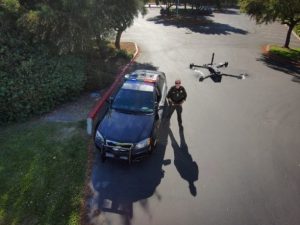India-Pakistan Drone Conflict Escalates: A New Era of Unmanned Warfare in South Asia
On May 9, 2025, India accused Pakistan of launching drone and missile strikes on three military installations within Indian territory and Indian-administered Kashmir. This incident marks a notable escalation in the long-standing rivalry between the two nations. Pakistan has refuted these allegations, claiming to have intercepted 25 Indian drones. Both nuclear-capable countries are increasingly employing unmanned systems in this volatile border conflict, as highlighted by reports from the BBC.
Drone Technology Fuels Tactical Shift
Drones have emerged as crucial assets in this confrontation. India utilizes Israeli-manufactured Harop and Heron UAVs for precision strikes and reconnaissance missions. The Harop is a loitering munition capable of autonomously identifying and striking targets, while the Heron offers superior surveillance capabilities with a range of 186 miles (300 km) and an altitude ceiling of 23,000 feet (7,000 m). Furthermore, India has entered a $4 billion agreement to acquire 31 MQ-9B Predator drones, which can conduct 40-hour missions at altitudes of 40,000 feet, reflecting a significant enhancement in its strike capabilities. In response, Pakistan operates a diverse fleet that includes Chinese CH-4 and Turkish Bayraktar Akinci drones, as well as local Burraq UAVs, totaling over 1,000 unmanned aerial vehicles. As Jahara Matisek, a professor at the US Naval War College, pointed out, “Pakistan’s dependency on Turkish and Chinese systems emphasizes an ongoing arms race.”
Strategic Implications of Drone Warfare
Drones enable both nations to engage in stand-off operations, minimizing the risks associated with manned aircraft and effectively lowering the political threshold for engagement. Matisek noted, “Drones reduce the political and operational thresholds for action, offering options for surveillance and strikes while attempting to mitigate escalation risks.” Nonetheless, incidents involving downed drones or incapacitated radars could trigger heightened tensions. India’s swarm drone strategies, which aim to overwhelm air defenses, are in stark contrast to Pakistan’s use of “loyal wingman” drones that operate in conjunction with piloted jets. This dual-purpose functionality—targeting and engaging enemy defenses—transforms drones into force multipliers, a trend also observed in Ukraine, although the India-Pakistan conflict has not yet reached a similar drone-dominated operational landscape.
Operational and Regulatory Challenges
The human cost of the conflict is stark: Pakistan has reported 36 deaths and 57 injuries resulting from Indian airstrikes, while India has cited 16 civilian fatalities from Pakistani artillery fire. The deniability offered by drone use complicates accountability; Pakistan contends it has neutralized Indian Harop drones using countermeasures. Regulatory deficiencies in drone warfare exacerbate these challenges, allowing both nations to exploit the ambiguities surrounding unmanned systems. Manoj Joshi, an Indian defense analyst, explained, “Utilizing drones as opposed to manned aircraft or heavy missiles presents a lower-tier military option,” yet cautioned that “this may merely be the inception of a more extensive conflict.”
Industry Trends and Future Outlook
The intensification of the India-Pakistan drone conflict underscores the rising prominence of UAVs in contemporary warfare, where loitering munitions and swarm tactics are redefining military strategies. India’s focus on high-value drones like the MQ-9B, coupled with Pakistan’s varied and economical drone portfolio, indicates divergent military philosophies. Matisek articulated that “the nation that masters drone warfare will not just observe the battlefield—they will dictate its terms.” As global powers advocate for restraint, the evolution of this conflict will depend on whether drones serve as a controlled military asset or signal the onset of broader confrontations, with significant economic and geopolitical implications for the stability of South Asia.
Photos courtesy of India Today / X













